| |
Research
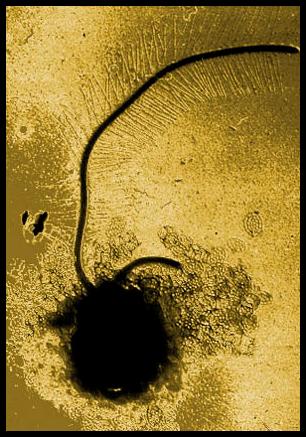 |
The Labyrinthulomycota is a phylum of eukaryotic protists. The phylum is a member of the larger candidate
kingdom known as the Stramenopila, Heterokonta, Chromista, and various other names. The Stramenopiles are united by the presence of a unique
biflagellate stage at some point in the life-cycle of all members. This biflagellate stage consists of one whiplash flagellum and one flagellum
with tubular tri-partite hairs. The image at left is from microscope.mbl.edu and shows the hairs of the leading flagellum. (All other images are mine.)
Within the Labyrinthulomycota, this flagellated stage is seen in the reproductive spores. Otherwise, the vegetative
stage exists as cells embedded on or within an ectoplasmic network. Despite the small taxonomic size of the group (around 50 described species),
there is great morphological and ecological diversity. My work involves meshing this diversity with an appropriate taxonomic scheme. To provide a
taxonomic framework for this group is important because I suspect that only a small fraction of the species that exist have been described to date.
|
|
As general decomposers of the marine environment, knowledge of the diversity and decay abilities of these organisms will play a vital role in
addressing larger concerns of marine conservation that we will face in the near future. In addition to primary decomposition, some members cause
disease to shellfish and eel-grass beds leading to mass die-offs. The die-off of one such eel-grass bed in Florida led to the first ever documented
extinction of a species due to disease. (A small Littorina snail endemic to the eel-grass beds). Other members of the Labyrinthulomycota are
cultivated for their copious production of omega-3 fatty acids, which are currently approved as additives to farm animal feed.
|
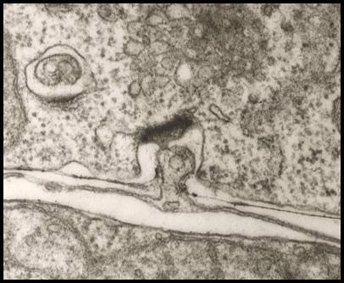
A bothrosome (electron-dense organelle at center of image) excreting ectoplasmic net to the cell exterior.
|
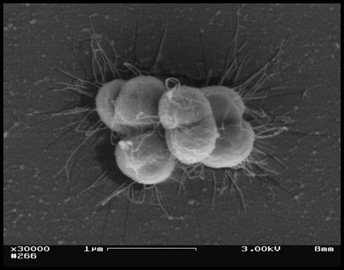
Thraustochytrium vegetative cells attached to the substrate with ectoplasmic net extentions.
|
|
Using ssrDNA sequence data, I have established the existence of three major lineages within the phylum, the
labyrinthulids, thraustochytrids, and aplanochytrids. Placing an isolate within one of these three lineages is simple based on gross morphology.
However, there are major issues resolving morphological identification strategies within each major group, especially the thraustochytrids.
Although motility has been investigated in the labyrinthulid lineage, motility in the aplanochytrids is poorly understood and
non-existent within vegetative cells of the thraustochytrids. In the near future, I am interested in exploring mechanisms of motility within the
group, as well as population ecology of these decomposers in varying habitats.
| |
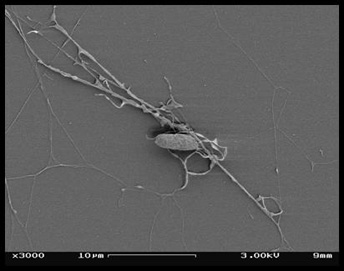
An Aplanochtrium sp., which is basketed in the ectoplasmic net and is motile using the network in an amoeboid fashion.
|
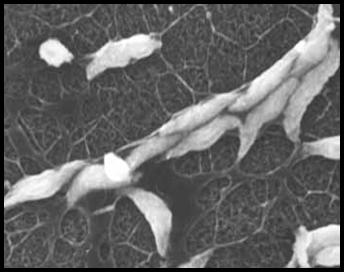
A Labyrinthula sp. enrobed in the ectoplasmic network through which it glides.
|
|
If you'd like to know more detail about these organisms, please contact me.
cleander(at)interchange.ubc.ca
|
back to top
|









